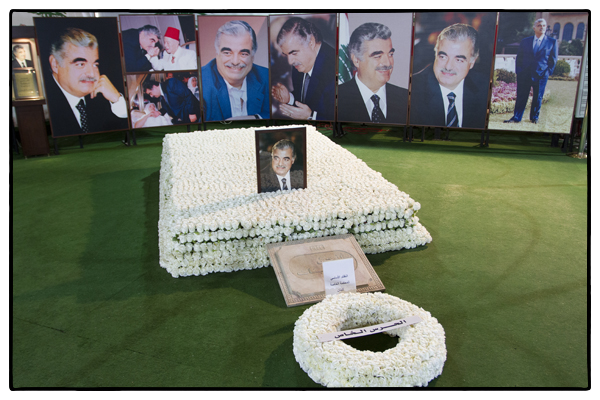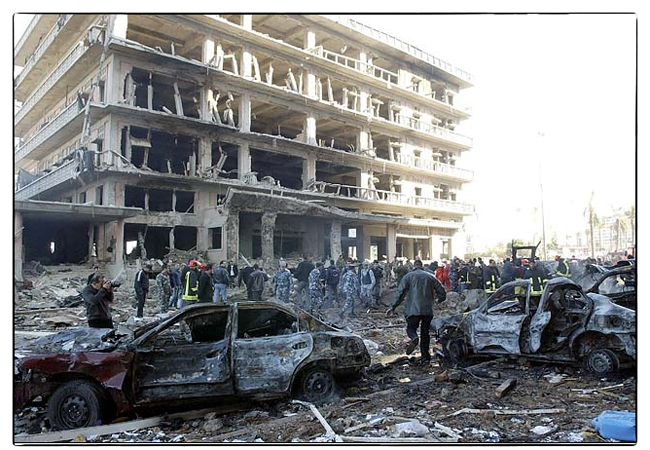So. I went to the café where Lebanon’s former Prime Minister, Rafiq al-Hariri, sipped his last cup of coffee. Then I stood on the very spot where he was assassinated by a truck bomb. This morning I went to his rather macabre grave site next to the Mohammed al-Amin Mosque directly across the street from the Martyrs’ Square Statue (riddled with bullet holes from the Lebanese Civil War).
I say the grave site is macabre because it’s situated inside of what looks like a white circus tent. I mean, I walked in all but sure that I was at the wrong location. Surely this was a Cirque du Soleil show or something. But, no, once you get inside, you see Hariri’s coffin, covered in white roses, as well as a shrine to his slain bodyguards and others who were killed in the explosion, a photo-montage of the man, and a quarter-mile-long wall covered in hand-written messages by people from all over the world. (One such message: “Rafik Hariri is the person who made Lebanon a nice place from a place that had nothing nice in it.”)
I asked several Lebanese why Hariri’s grave was housed under a white tent 8 years after his death and got various reasons. One was that the entire Martyrs’ Square is being redone and once it’s completed, visitors to Hariri’s grave will be able to turn around and look directly at the Martyrs’ statue.
But I like the reason I heard from an old man who was paying his respects the same morning I was. He told me that the temporary tents would remain in place as a reminder that until the persons (or state) responsible for Hariri’s death were brought to justice, Hariri would not permanently rest in peace.
We’ll see, once Syria’s president Bashar al-Assad is toppled, whether this is true. I hope so.






Recent Comments